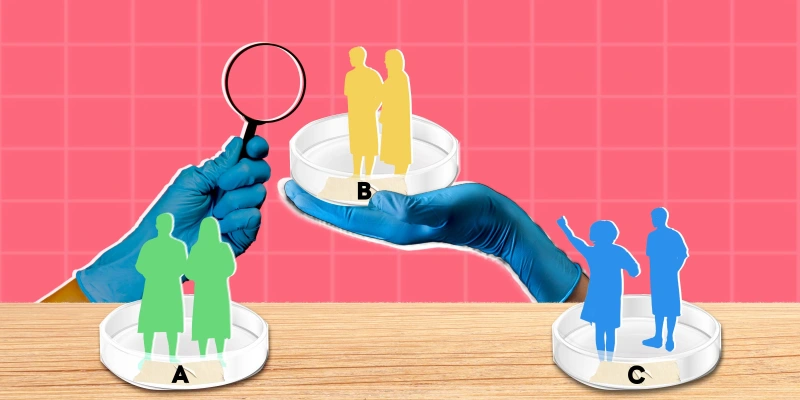Suicide is the 10th leading cause of death in the United States. And yet, it is one of those epidemics no one likes to talk about.
As a psychiatrist, I talk about suicide all day, every day with my patients — I have to. And, as the years have passed, it has become less stressful.
But lately, I’ve found myself thinking: What about other physicians? The ones who might see their patients frequently, might have built trusting relationships with them? The opportunity to save a life is there for them, too.
In recent years, big health care organizations have started to screen for suicide. The “Zero Suicide” initiative and the Columbia-Suicide Severity Rating Scale have been widely adopted; evidence suggests they are effective at decreasing suicide rates. But outside the giants (e.g., Kaiser Permanente, UMass Memorial Health Care System, St. Joseph’s Health Care London, etc.), there are missed opportunities for suicide screening in small and private practices, especially in primary care practices.
There are a number of warning signs primary care clinicians might see before anyone else. If a patient is not taking his medications, for example, that can be a sign of depression or, perhaps, an expression of self-harm. If a patient has a family crisis, is in financial distress, or is going through a divorce, those can be warning signs. If a patient has a dear family member who is sick, or has recently lost someone. If a patient has been diagnosed with a severe illness, has chronic pain, or is part of the LGBTQ+ community — all factors that might weigh in favor of a closer evaluation. Even minor things — if a patient looks different or has been sleeping badly — might be a sign. The list of risk factors is long: active substance or alcohol abuse, psychosis, discharge from a psychiatric hospitalization in the last year, history of suicide attempts, family history of suicide, lack of companionship — all of these, and many more, are good reasons to screen for suicide.
So: How do you talk to your patient about suicide?
For patients considering suicide, it can seem like a solution, be it to emotional or physical pain. Such patients tend to express feelings of shame or guilt, as well as feeling like a burden on loved ones. Feeling lonely, stuck, or hopeless are other common emotions accompanying suicidal thoughts.
What all of this means is that we, as clinicians, should try to be gentle, compassionate and curious about a patient’s state.
I often ask patients about suicide in this way: “You know, you’ve told me a lot of things that sound really discouraging. Correct me if I’m wrong but it sounds like you feel stuck in this situation and don’t see any way out. In my experience, people who have gone through what you are going through often tell me they think or have thought about killing themselves. I was wondering if you ever experience such thoughts?”
Sometimes, that’s enough to get the patient to open up. If I know in advance, however, that the patient I’m speaking to doesn’t like to talk about their feelings, I might say instead: “Let me ask you some of my psychiatric questions, I ask them with pretty much every person I see. It sounds to me like you have been dealing with a lot lately and from my medical knowledge and experience, I know it’s common to have thoughts about death — and often about suicide — in these circumstances. Has that happened to you?”
If a patient answers “yes” to however I formulated the question, I empathize and I usually tell them something like, “I understand now how bad you’ve been feeling, I’m sorry for that, can you tell me more?”
For many patients, having someone caring enough to ask the question is already part of the intervention. And encouraging them to say more about their situation and how it relates to their thoughts of suicide can often lead to a solution that does not necessarily involve psychiatric hospitalization.
All of that said, it’s important to note that before screening, clinicians need to know in advance what resources are available in the case a patient is actually contemplating suicide. If for example, a patient communicates a suicide plan (i.e., has the means and/or intent to kill themselves), the clinician will need to identify the situation as a psychiatric emergency and will need an acute evaluation, usually performed in an ED or psychiatric ER. In such cases, the clinician will need to facilitate safe transport. I also recommend familiarizing with the state’s laws regarding involuntary hospitalization.
Sometimes saving someone does not feel heroic — but it's still the right thing to do. Getting comfortable with the uncomfortable responsibility of discussing patients’ suicidal thoughts is always much better than not even asking. Asking is caring.
Are there conversations you think clinicians shy away from having with patients? Share your tips for getting comfortable with uncomfortable conversations in the comments.
Dr. Yehonatan Shilo is a psychiatrist with an international perspective on health care. He completed his education in Italy and has practiced medicine and psychiatry in Israel and the United States. He has special interests in underserved populations, health care policy and psychotherapy. He is a 2020–2021 Doximity Op-Med Fellow.
Illustration by April Brust
This article is meant to increase awareness of suicide risk in the primary care setting. It is not a substitute for appropriate suicide prevention training.
If you or someone close to you is experiencing thoughts of suicide, please call the National Suicide Prevention Lifeline at 1-800-273-8255 or text HELLO to the Crisis Text Line at 741741.







